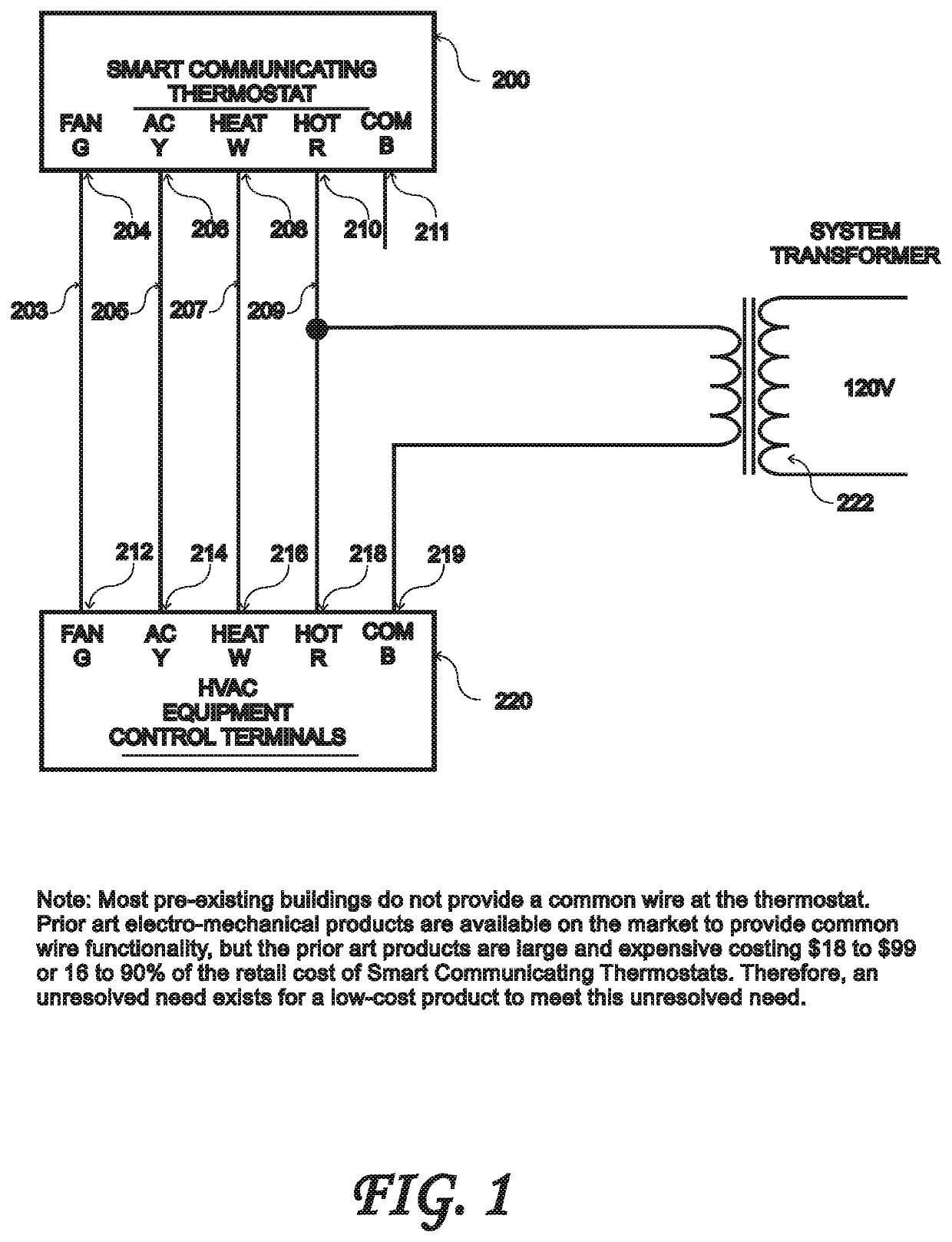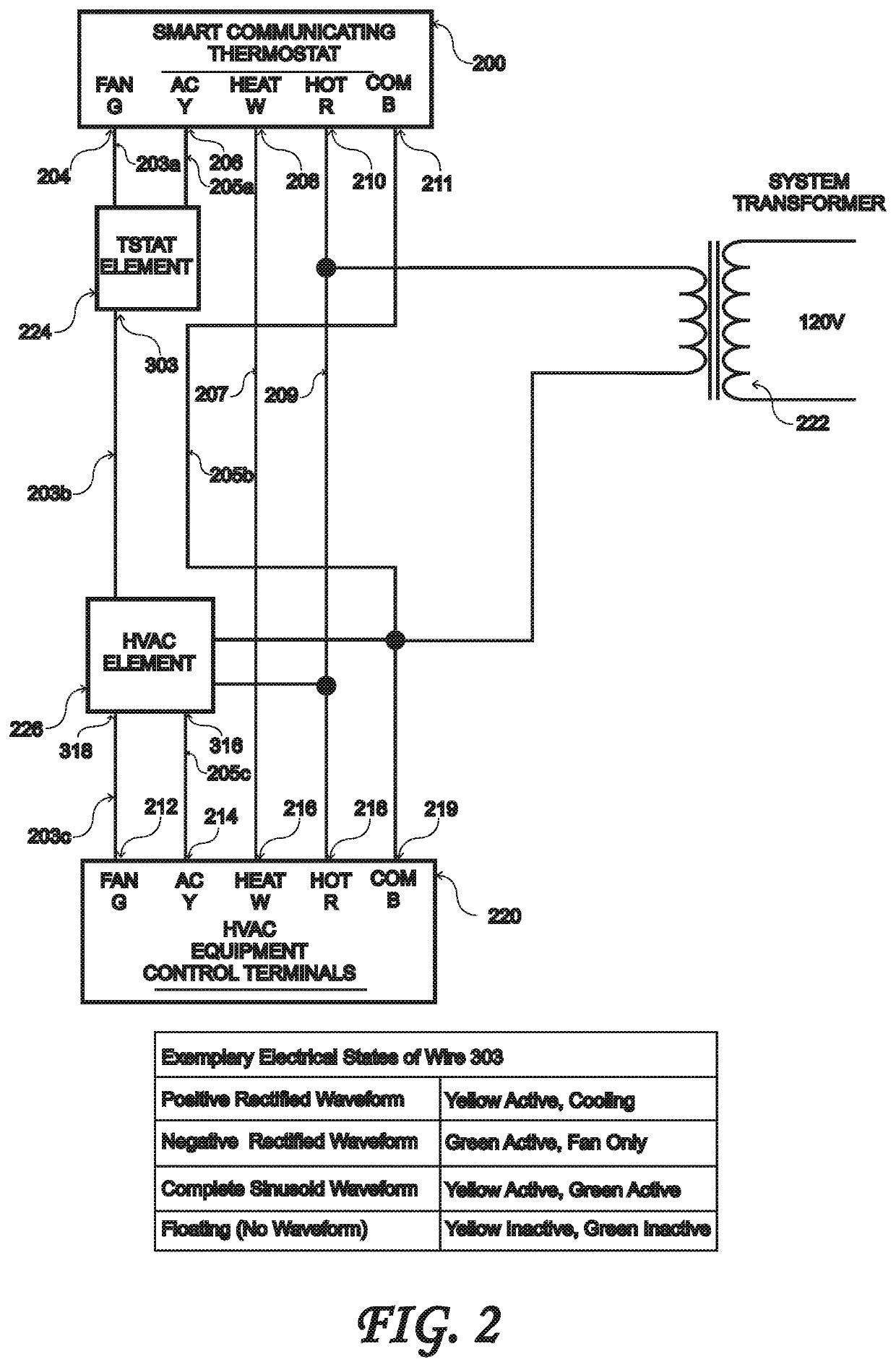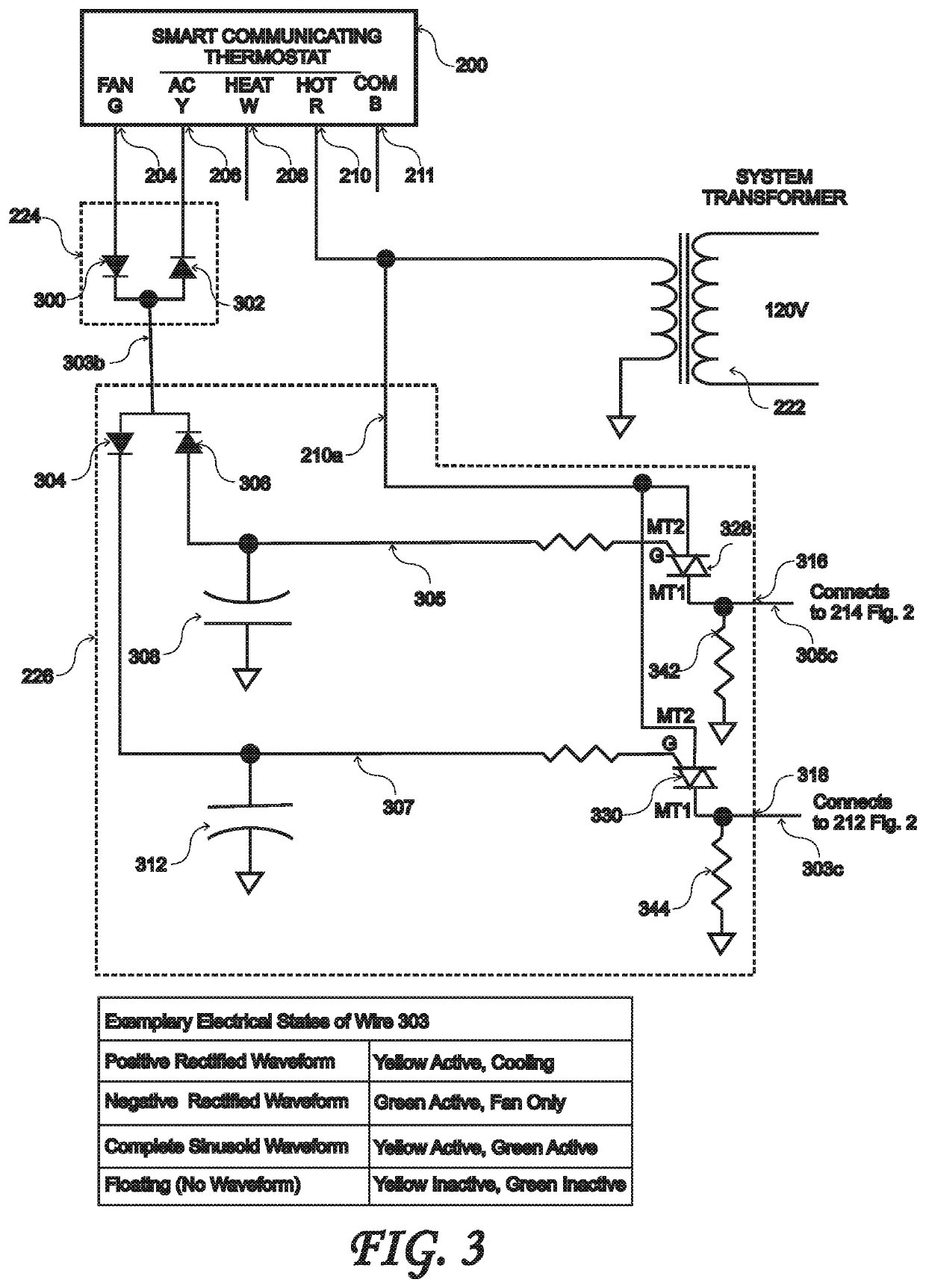Solid-state common-wire adapter for smart communicating thermostats
a common-wire adapter and smart-communication technology, applied in lighting and heating apparatus, heating types, instruments, etc., can solve the problems of not providing a common-wire to provide reliable power, smart-communication thermostats not working properly, large devices, etc., and achieves low cost, reliable power, and easy installation.
- Summary
- Abstract
- Description
- Claims
- Application Information
AI Technical Summary
Benefits of technology
Problems solved by technology
Method used
Image
Examples
Embodiment Construction
[0085]The following description is of the best mode presently contemplated for carrying out the invention. This description is not to be taken in a limiting sense, but is made merely for the purpose of describing one or more preferred embodiments of the invention. The scope of the invention should be determined with reference to the claims.
[0086]FIG. 1 shows prior art thermostat wiring when only 4 wires are available in the wiring harness. This case is prevalent in existing buildings which were built before Smart Communicating Thermostats were available. Most thermostats prior to Smart Communicating Thermostats simply connected the Hot R terminal 210 to the appropriate output based on whether the thermostat was set for heating or cooling. For cooling, the standard thermostat connects the Hot R terminal 210 to both the Fan G terminal 204 and the AC Y terminal 206. This activates the compressor and the system fan. For heating, the thermostat connects the Hot R terminal 210 to the Heat...
PUM
 Login to View More
Login to View More Abstract
Description
Claims
Application Information
 Login to View More
Login to View More - R&D
- Intellectual Property
- Life Sciences
- Materials
- Tech Scout
- Unparalleled Data Quality
- Higher Quality Content
- 60% Fewer Hallucinations
Browse by: Latest US Patents, China's latest patents, Technical Efficacy Thesaurus, Application Domain, Technology Topic, Popular Technical Reports.
© 2025 PatSnap. All rights reserved.Legal|Privacy policy|Modern Slavery Act Transparency Statement|Sitemap|About US| Contact US: help@patsnap.com



